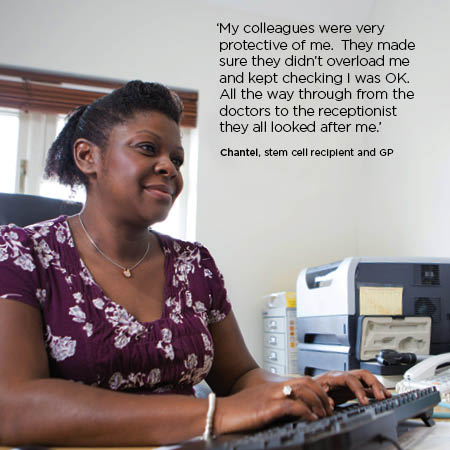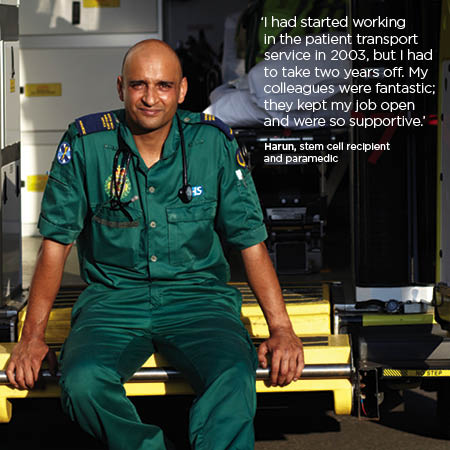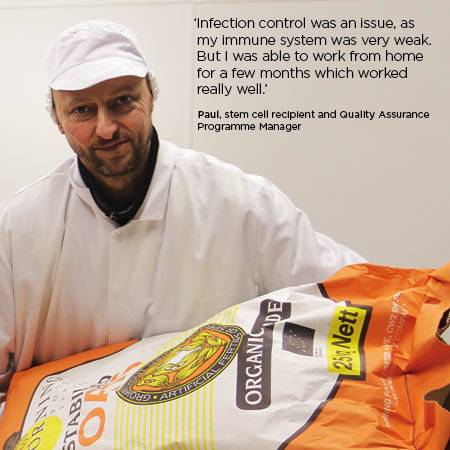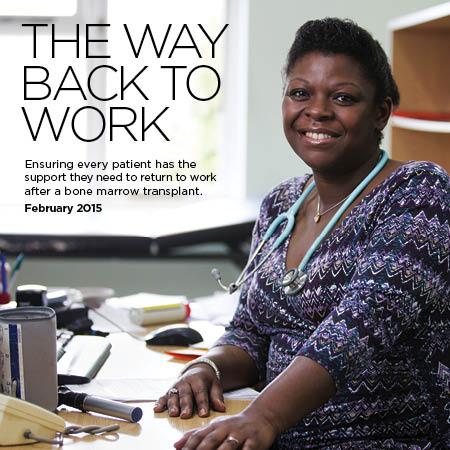Simon Butler is Policy and Public Affairs Manager at Anthony Nolan. Before joining the charity in June 2014 he worked in Parliament and as a lobbyist in the sport and recreation sector. You can follow him on Twitter at @simonbutler86
You can download the full Way Back to Work report on our website here.
Road to recovery
Before we started work on our recent policy report, I admit I hadn’t given a lot of thought to the challenges that patients face when it comes to going back to work after a stem cell transplant.
Much of what we do at Anthony Nolan focuses on searching for donors and supporting people through their transplant, and so it becomes all too easy to think of a transplant as the end of the story. But of course the reality is that a successful stem cell transplant is actually the start of a long road to recovery.
Milestones for transplant patients
Returning to employment can be a very important step on that journey. When we did the research for The Way Back To Work, patients told us that they saw it as a chance to get back to the routine of every day life, and a welcome distraction from the recovery process.
Chantel, a stem cell recipient and GP, put it well: “Getting back to work was a big milestone. It gave me a sense of normality. I wasn’t feeling like a patient – I was somebody contributing to society again.”

Crispin, also a recipient, told us that returning to his job as a postal worker “meant returning to the camaraderie of people I’ve worked alongside for many years.”
These positive experiences are reflected in the data generated by our research. Our partners for the project, Justice Studio, surveyed over 120 patients to determine the impact of returning to work. They found that respondents who were in paid work at the time of the survey demonstrated improved wellbeing and better general health.

A difficult transition
What our survey also showed, however, is that going back to work is rarely easy for anyone recovering from the long-term impact of a stem cell transplant. In The Way Back To Work we report that only 54% of patients return to work within 3 years following their transplant – a figure that suggests there are significant barriers to overcome.

Worryingly, 36% of stem cell recipients who weren’t in employment told us they wanted to be in paid work, while another 25% told us it would be too difficult to go back.

For patients who are able to resume their career, the transition is often more difficult than they, their families or employers expect. During patient interviews we heard that going back often involves changes to responsibilities and working patterns, and were told that the challenge of going back to work full time can be particularly tough.
Support in the workplace
When it comes to supporting people to make the transition, employers have a key role to play. Support in the workplace – such as a phased return, flexible hours and extra sick leave – can make a huge difference to those returning after a transplant.
We heard a lot of praise for employers who had offered this kind of support. Paul, a Quality Assurance Programme Manager at a food retailer, told us: “Infection control was an issue, as my immune system was very weak. But I was able to work from home for a few months which worked really well.”

Harun, a paramedic who last year featured in Anthony Nolan’s After exhibition, said: “My colleagues were fantastic; they kept my job open and were so supportive.”
Making the case for better patient support
But its not just employers who can make a difference. Since the publication of Road Map to Recovery in 2013, Anthony Nolan has been making the case for all transplant patients to have access to high quality care and support throughout their recovery.
If NHS services adequately address the full range of long-term impacts of a stem cell transplant – psychological as well as physiological – more patients would receive the support they need to make a successful transition back to work.
The Way Back to Work helps to meet this challenge in two ways. Not only does it provide further evidence of the need for high quality services – which helps us make the case with politicians – but it also helps shape the information, guidance and support offered by our Patient Experience Team.
For more information about The Way Back To Work report, visit https://www.anthonynolan.org/8-ways-you-could-save-life/campaign-us/way-back-work, or contact Simon Butler at simon.butler@anthonynolan.org
